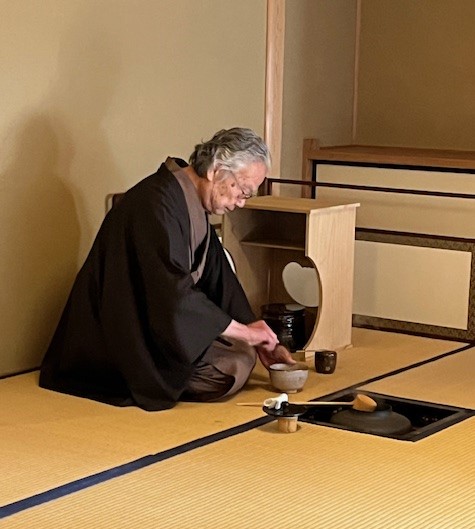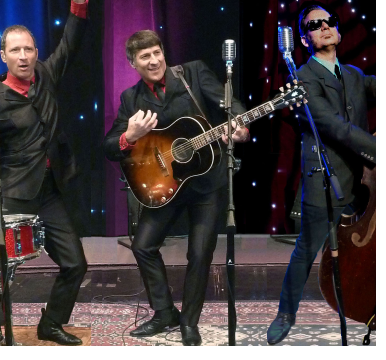In November, I had an opportunity to attend a traditional tea ceremony (sadou— “the way of tea”) in my prefecture. It was sponsored by the National Museum of Kyushu and was performed in a beautifully appointed tea house that the museum maintains on its property.
This particular tea ceremony’s grouping of people was organized by a friend who works at the museum, and our particular event catered to foreign tea enthusiasts who wanted to have this unique opportunity to attend a tea ceremony at the museum. I was trying to remember, but I think it had been more than 20 years since I had last attended a tea ceremony so I was long overdue to experience again this very cultural, educational, artistic, and ceremonial event.
Historically, green tea was first introduced to Japan during the 8th century from China. It was mostly reserved as a beverage for the priestly and upper classes and was widely regarded as medicinal. However, during the Muromachi Period (1333-1573) it became popular among the citizenry in all socio-economic classes.
The wealthier class continued to maintain a certain air of sophistication around tea where they would hold tea parties as a way to display the lovely ceramics and pottery that is associated with drinking traditional tea in Japan.
It was also during the Muromachi Period that the simplistic, more spiritual concept of tea drinking inspired by Zen-Buddhism became more commonplace. The tea ceremony I enjoyed at the museum was done in this style, called “omotesenke.”

The father of the modern “way of tea” was Sen no Rikyu (1522-1591) and he promoted a style that emphasized simplicity and even austereness in how the tea is served, following a prescribed and formal process and procedure that is beautiful in its solemnity and exquisite in its presentation.
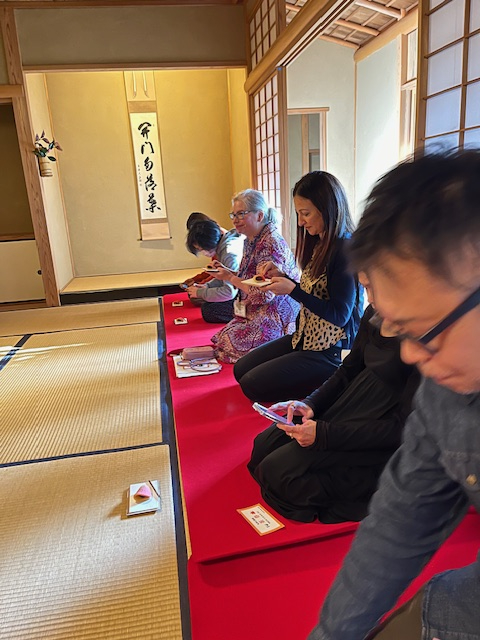
The tea ceremony itself is sacred in that it is a moment in time that cannot be repeated exactly as it was ever again with the same people, same atmosphere, etc. The tea ceremony takes place in a traditional tatami (straw mat) room and the room usually has wall dividers called fusuma that can enlarge the room for more people, or make it smaller for a more intimate gathering of just a few people.
The room always features a tokonoma, which is an alcove where a traditional calligraphy scroll is hung in view of the guests to admire and enjoy while in the room. This scroll can be changed out for each season which adds to the uniqueness that each ceremony offers, making it distinctive and special in its own right. Oftentimes, seasonal flowers are displayed in the tokonoma in a traditional ceramic vase.
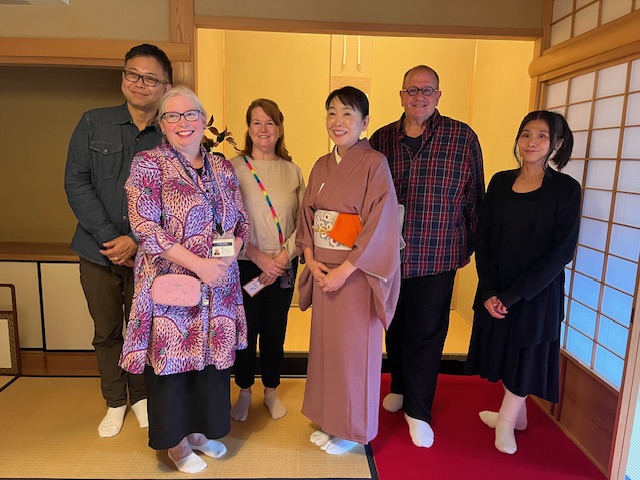
Initially, the guests gather in an outer chamber to wait for the tea ceremony to begin. One guest is designated as the “head guest” who will lead the others into the tatami room where the ceremony takes place. Upon entering, the head guest bows and then sits closest to the alcove and the other guests file in and take a seat on the floor in a line beside the head guest.
Traditionally, guests are expected to sit seiza (on one’s knees) which can be difficult for the uninitiated. Thankfully, in modern times much flexibility is allowed to guests who participate usually, and a more relaxed position is tolerated where one can sit cross-legged or with one’s legs off to the side. Sometimes chairs are offered to those who, for physical reasons, cannot sit on the floor with ease or in comfort.
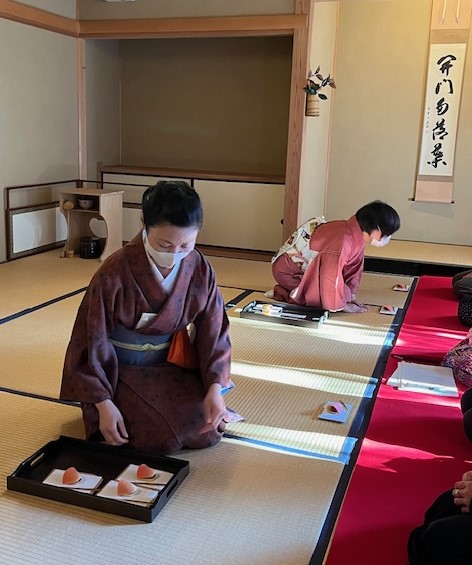
For each ceremony, great care is taken to select the right tea, the perfect sweets to accompany the tea, and the appropriate tea bowl that the tea is served in. The ceremony I attended was in the autumn so everything had an autumn feel to it — the coloring of the sweets, the flowers, the scroll — all adding to and enhancing the entire atmosphere of the tea room.
First, guests are served the traditional Japanese sweet and it is expected that it be eaten before the tea is served. It acts as sort of a palate cleanser and compliments the tea itself; hence why great care is taken by the host to select the perfect sweet and tea for the occasion.
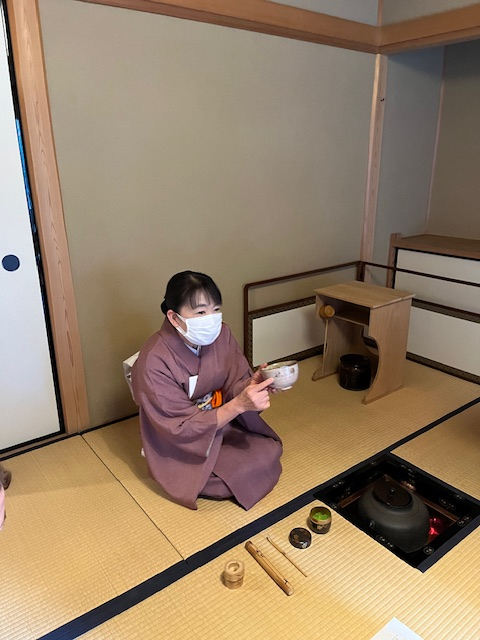
When served the tea, it is placed in front of the guest on the tatami flooring and the server and guest exchange deep bows. It is customary to pick up the tea bowl in your right hand and then place it in your left hand, and with the right hand turn the bowl clockwise by one turn. This is so the front of the tea bowl is no longer facing you, the guest, but is now facing outward. The guest then takes several sips before placing it back down on the tatami mat, where the guest then bows again and expresses gratitude for receiving the tea.
We were instructed before arriving not to wear any fragrance or cologne as the incense in the brazier where the water for the tea is heated is specifically chosen and any additional scents would interfere with the aroma of the incense wafting from below the kettle in the brazier. We were also told not to wear any jewelry that might clang against the ceramics while being served the tea which would be distracting but could also damage or chip the porcelain the tea is served in.
Additionally, we were asked to wear white socks on our feet during the ceremony. We were able to change our stockings in the ante-chamber before the ceremony began. Normally, it is appropriate to dress modestly, but casually and neatly, to attend a tea ceremony
It is customary after being served the tea initially to reflect upon the experience and to pick up the tea bowl and admire its delicate and special attributes. Once finished it is appropriate to turn the bowl so the front is facing the host and gently set it down on the tatami flooring.
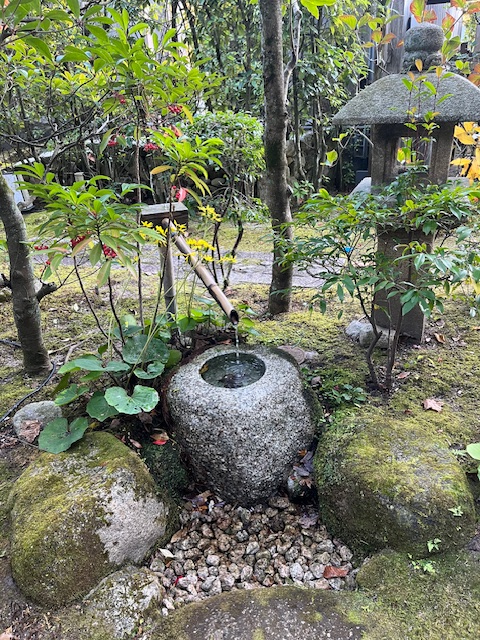
Once the host or tea master has served the guests and no guest wants a second bowl of tea, the host then wipes clean the tea bowl and rearranges the utensils. This indicates the tea ceremony is concluded. In our case, one of the women serving the tea then allowed us to come in close to observe the tea utensils and the bowl for a more detailed explanation about the tools that were used, as well as an explanation of the type of tea served, and the various utensils that were painstakingly selected for our ceremony.
Because the tea house had beautiful gardens to peruse, we all went outside and looked at the lovely landscaping which was accentuated by the beautiful autumn foliage. Often, a traditional tea house will have an authentic and traditional Japanese garden available for the guests to stroll around in and admire.
The primary purpose of the garden is to set the scene for the tea ceremony by offering a calming, relaxing, and tranquil space for guests to enjoy. Depending on the season, flowers are often included in the garden but they should not be too bright or have a strong fragrance which would detract from the tea ceremony itself.
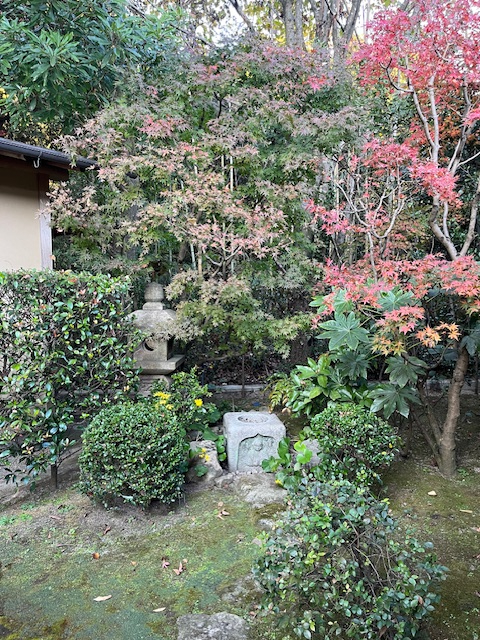
I especially appreciated the stone basins and lanterns that were featured in the garden. Traditionally, the basin would be used by guests to rinse their hands before entering the tea house. Also, tea houses traditionally feature a very short door through which guests enter by getting on their hands and knees to pass through. This is to symbolize that all who enter the tea house are at the same level and height as the others, making everyone equal in stature.
I have made a solemn promise to myself not to wait another twenty years to attend my next tea ceremony!
In fact, I may make an effort to attend at least one yearly because there are few things that are as quintessentially Japanese as the tea ceremony so I should try to experience it as often as I can since I live here.
The Shelby County Post is a digital newspaper producing news, sports, obituaries and more without a pay wall or subscription needed. Get the most recent Shelby County Post headlines delivered to your email by visiting shelbycountypost.com and click on the free daily email signup link at the top of the page.









